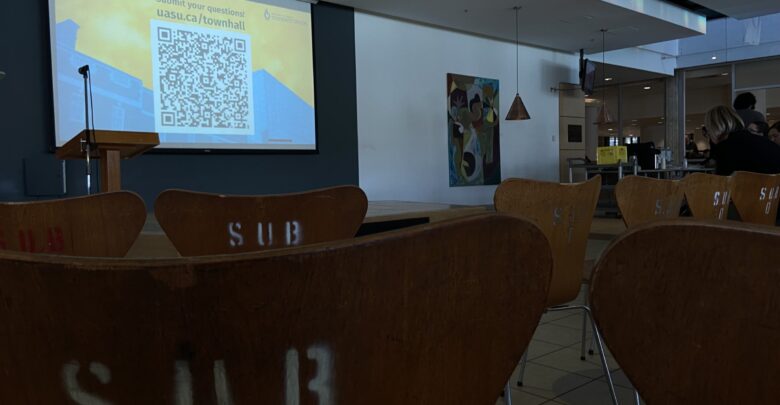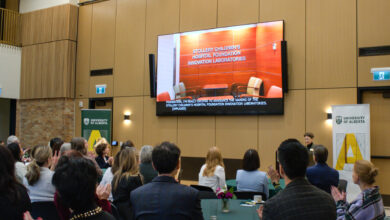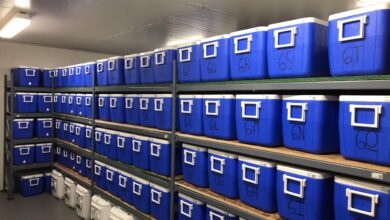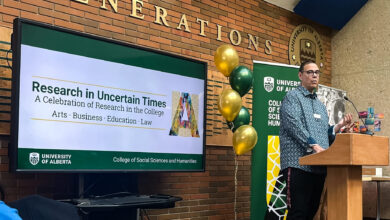U of A students raise tuition concerns at tuition town hall
"There is no way for the university to balance its budget without a tuition increase," deputy provost (students and enrolment) says.
 Kathryn Johnson
Kathryn JohnsonOn October 29 at 12:00 p.m., the University of Alberta Students’ Union (UASU) hosted a tuition town hall for students to share their concerns about tuition affordability with university administration.
The event took place in the Students’ Union Building (SUB) at SUBstage. Approximately 10 students attended in person, while others joined from a livestream.
Students were able to submit their questions through an online form. Melissa Padfield, deputy provost (students and enrolment), answered the questions along with others from university administration.
The town hall began with a presentation from Padfield. She spoke about the university’s financial concerns and the need to maintain quality education, which she said necessitates tuition increases.
The university has proposed a two per cent domestic tuition increase for 2025-26 which will apply to all programs. This increase does not cover inflationary costs and is “the maximum legislated allowable increase available,” Padfield said.
“We’re working very hard to try and work within our means, deliver a balanced budget, and make sure that students get a really great quality program,” she said. “There is no way for the university to balance its budget without a tuition increase.”
To increase funding for student financial support, the university will “pursue a 15 per cent financial support offset of new tuition revenue,” Padfield said.
Tuition increases are necessary for maintaining quality education, Padfield says
UASU President Lisa Glock, Vice-president (student life) Renson Alva, Vice-president (external) Abdul Abbasi, and Board of Governors (BoG) Representative Adrien Lam moderated and read the online questions.
One student asked how tuition increases will improve quality of education. Padfield repeated that tuition increases do not cover inflation.
“We can’t improve anything when we can’t cover the cost of the current delivery of our education and research mission,” she said.
Padfield also stressed the university’s commitment to improving the teaching and learning experience, citing the university’s artificial intelligence (AI) task force and the Student Experience Action Plan (SEAP).
Students question the long-term impacts of tuition increases
In response to a question about how increasing enrolment will impact tuition in the future, Padfield said that the university will prioritize student consultation as enrolment grows.
Padfield also encouraged students to voice their tuition concerns to the Government of Alberta. She referred to the UASU and the Graduate Students’ Association‘s (GSA) communication with the provincial government as an “important conduit” of discussion about tuition.
Another student questioned the positive outcomes of tuition increases.
“When students contribute a two per cent increase in their tuition, that has a really positive impact on program delivery. It allows us to try to keep quality at the level students deserve,” Padfield said.
A student who attended last year’s tuition town hall asked about how often students could expect to see increases. Padfield said that increases will continue until inflationary pressures are covered.
“Our operating program support grant from the government does not have an inflationary increase, and we continue to be cut in that way,” she said.
Some students asked if tuition money goes towards the university’s investment portfolio. Padfield said that student tuition goes to program delivery, not university investments.
Additionally, Padfield referred students to the Student Service Center for assistance with their individual financial concerns.
Glock said that the UASU will host a similar event for international tuition increases once more data is available.




